Invisalign® Clear Braces – Conway, SC
The Subtle, Discreet Way to Straight Teeth
Have you been hiding your smile because of your crooked teeth? Would you like to straighten them without having to deal with traditional metal braces? At American Dental Care, we offer an alternative for our patients: Invisalign clear braces in the Conway, SC area. The Invisalign system, sometimes referred to as Invisalign clear braces, uses a unique series of clear plastic aligners that progressively shift your teeth into the perfect position.
Why Choose American Dental Care for Invisalign® Clear Braces?
- Saturday Appointments Available
- Dentist with Over 2 Decades of Experience
- Friendly, Skilled Dental Professionals
How Invisalign Works

The Invisalign process starts with a consultation with Dr. Murph, who can evaluate your orthodontic needs and determine if Invisalign can help you achieve the results you’re looking for. Once we decide that Invisalign is the right choice for you, we’ll take impressions of your teeth, create your personalized treatment plan, and send this information to Invisalign labs for fabrication. When the first set of aligners arrives, you will wear them for 20 to 22 hours every day, removing them only to eat, drink, and perform daily oral care. In about two weeks, you’ll make the switch to the next set. Every once in awhile, we’ll ask you to come in so that Dr. Murph can check on your progress. After about 12 to 18 months, you’ll receive a retainer that you initially need to wear just like the aligners, but eventually, you’ll be able to put it in just at night to prevent your teeth from shifting back.
When the first set of aligners arrives, you will wear them for 20 to 22 hours every day, removing them only to eat, drink, and perform daily oral care. In about two weeks, you’ll make the switch to the next set. Every once in a while, we’ll ask you to come in so that Dr. Murph can check on your progress. After about 12 to 18 months, you’ll receive a retainer that you initially need to wear just like the aligners, but eventually, you’ll be able to put it in just at night to prevent your teeth from shifting back.
Who Can Invisalign Help?

In addition to being discreet and effective, Invisalign is quite versatile! In fact, the clear aligners can address several common orthodontic issues, including:
Crowded Teeth
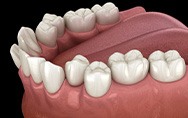
Do your teeth crowd together to the point where they overlap? If so, it’s time to schedule an appointment with our Conway dental team to see if you’re a candidate for Invisalign! After all, even in minor cases, overcrowding can negatively affect multiple aspects of your smile, including your oral health. If clear aligners are a good fit for you, then we can design a custom series to gently guide your teeth into their properly aligned positions (in an average of just 12 to 18 months too!).
Gaps Between Teeth
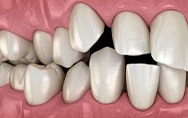
Spaced-out teeth are another common orthodontic problem. Fortunately, Invisalign is a solution! With a custom series of clear aligners, we can carefully push your teeth closer and closer together until the gaps completely disappear. So, whether you have multiple small gaps or one large one, don’t hesitate to see if you’re a candidate for Invisalign. Once your consultation is on the calendar, you’ll be a big step closer to your happiest, healthiest smile.
Overbite
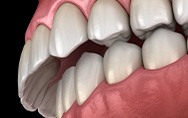
There’s a common misconception that orthodontic treatments, including Invisalign, can only straighten your teeth. That’s not the case. The clear aligners can be used in tandem with other orthodontic accessories, like rubber bands and buttons, to address bite problems as well, including overbites. So, if your upper teeth jut out far beyond your lower teeth, don’t just assume that metal brackets and wires are your only option. There’s a good chance that Invisalign is an option as well!
Underbite
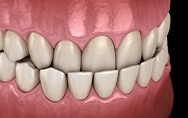
Sometimes, patients visit us because they are struggling with the opposite problem: their lower teeth are sitting in front of their upper ones. It’s very common for this bite issue to lead to chronic jaw pain, premature wear and tear, trouble chewing properly, and low self-esteem. That’s why we recommend scheduling a consultation with us sooner rather than later. We want to determine if Invisalign is an option and, if it is, start the process of moving your teeth into proper alignment.
Crossbite
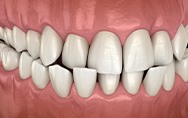
Even if you have a minor crossbite, you can run into issues like worn-down teeth and uneven chewing patterns. Fortunately, we can bring your bite into proper alignment – oftentimes with Invisalign! This does usually require the use of other orthodontic accessories, like rubber bands. Rest assured, your teeth-straightening journey will still be considerably more discreet than if you had traditional braces.
Open Bite
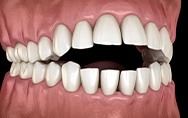
If you can’t bite down all the way because there is space between your upper and lower teeth, then you likely have an open bite. The good news is that Invisalign has proven to be effective at correcting more mild cases. In other words, metal brackets and wires aren’t your only option; you can achieve a healthier smile and bite with Invisalign!
The Benefits of Invisalign

Here are a few of the many reasons 12+ million patients around the world have chosen to straighten their teeth with Invisalign:
- The aligners are clear, making the teeth-straightening process quite discreet.
- There aren’t any dietary restrictions or cumbersome oral hygiene regimens.
- The average treatment timeline is just 12-18 months.
- There are fewer check-in visits.
- The trays are crafted from comfortable materials and are custom-made just for you.
Living with Invisalign Aligners

Whether you’re a busy parent, a college student, or someone constantly on-the-go, Invisalign is flexible enough to adapt to your lifestyle. It's one of the many benefits that the clear aligner system has baked-in, making it a great option for anyone needing to straighten their teeth. At American Dental Care, we offer advice and education to help patients adjust to their aligners quickly, allowing them to undergo treatment without disrupting their lives. If you’re curious how Invisalign might fit into your routine, read more below!
Wearing Your Trays

To ensure quality results, your aligners should be worn for 20 to 22 hours per day. They should only be removed for eating, drinking anything other than water, and brushing or flossing. At first, this can take some discipline, but as you get used to your aligners, you’ll start to get the timing down.
Once your teeth have settled using one aligner (usually after around two weeks) you’ll switch to the next one in the set. This lets you continue your treatment without interruptions!
Cleaning Your Aligners
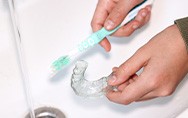
Keeping your aligners clean and clear not only helps prevent dental issues like cavities and bad breath, but also keeps them see-through. Always rinse your trays with lukewarm or room temperature water to avoid warping the trays with too much heat.
To clean your aligners more thoroughly, use Invisalign cleaning crystals or a soft-bristled toothbrush with clear hand soap. Also, remember to brush and floss after every meal before reinserting your aligners to prevent plaque and bacteria buildup.
Eating & Drinking

One of the advantages of Invisalign is the freedom to eat and drink whatever you like! However, your aligners must be removed before chowing down to prevent damage or staining. Once you take them out to eat, be sure to store them in a protective case. This helps avoid losing them and possibly delaying your treatment.
Another thing to note is that you can drink water whenever you want. So, try to keep some handy to keep your mouth moist and rinse away any food particles or pigments that might stain your trays.
Losing or Damaging a Tray

Accidents happen, and your aligners may occasionally get lost or damaged. After all, they’re hard to spot by design. If this happens, don’t panic! Simply call us as soon as you can.
Depending on your treatment plan, Dr. Murph may recommend that you move on to your next set of aligners or replace the damaged tray. To minimize the risk of losing your aligners, always store them properly when they’re not in your mouth.
Routine Check-Ins

Invisalign treatment typically requires check-ins every four to eight weeks to ensure your treatment is on track. During these quick appointments, which usually last around 15 minutes, Dr. Murph will check your progress, provide new sets of aligners, and make any necessary adjustments.
When compared with traditional braces, the number and frequency of these appointments is much lower, giving you more time to do the things you love!
Understanding the Cost of Invisalign

If you’ve been having a hard time pinpointing the cost of Invisalign online, that’s because each orthodontic treatment is 100% personalized! As a result, there isn’t a one-size-fits-all answer, and even general price ranges can be misleading. That’s why we recommend scheduling an appointment with our Conway dentist if you want to get an estimate of the cost. Until then, you can read on to learn some more general information on the topic, including the financial solutions we offer so your teeth-straightening journey is affordable.
Factors That Affect the Cost of Invisalign
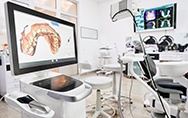
Since no two smiles are the same, no two treatment plans are the same. Since no two treatment plans are the same, no two patients pay the exact same price. When you come in for your consultation, we will take X-rays, learn about your dental history, and complete a comprehensive oral exam to determine:
- If your case of malocclusion is mild, moderate, or severe
- How many aligners are needed
- If single-arch treatment is possible
- If orthodontic accessories, like attachments, are necessary
- The type of retainer that’s needed
Invisalign vs. Mail-In Aligners: Which Costs More?
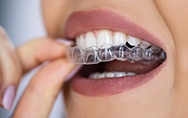
Mail-in aligners almost always cost less. That’s because DIY impressions are used, treatment plans aren’t overseen by licensed dental professionals, and patients are left with nowhere to turn if something goes wrong or the company goes out of business (which has happened before). That’s why, even if it requires a higher investment, it’s best to choose a professional orthodontic treatment, like Invisalign.
Does Dental Insurance Cover Invisalign?

You might be surprised to hear that dental insurance providers do sometimes cover a portion of the cost of Invisalign, especially if this discreet orthodontic treatment will benefit the health and function of your smile. So, it’s definitely worth taking some time to review the fine print on your plan to see exactly what is and isn’t covered. Our team at American Dental Care can also help you by providing you with an estimate of your out-of-pocket expenses, so don’t hesitate to get in touch with us if you’re interested in learning more about this financial solution.
Options for Making Invisalign Affordable

It’s currently estimated that 50% of patients don’t have dental insurance. If you’re one of them, does that mean that Invisalign will be extremely expensive? Fortunately, the answer is “no!” At our Conway dental office, we also welcome flexible financing with CareCredit, which means you won’t have to pay for the entire cost of Invisalign in one lump sum. Instead, you can find a payment plan that works with your budget and space out the total price into smaller, more manageable chunks.
Are you interested in getting an estimate of the cost of your teeth-straightening journey with Invisalign? If so, the next step is simple: schedule a consultation with us! We can provide you with an estimate of the price at your appointment, and we can also review the financial solutions available to you more in-depth at that time.
Invisalign FAQs

What Does Invisalign Look Like?
The answer is that once they’re on your teeth, Invisalign doesn’t look like much. The trays are clear and thin, which means that they’re incredibly hard to detect while you’re wearing them. As you can imagine, this is a huge boon compared to bulky traditional braces.
In some situations, we may need to add attachments or buttons to your teeth in order to give you the results that you’re looking for. These should still be pretty discreet but are slightly more visible than your trays will be.
Does Invisalign Hurt?
As with any kind of orthodontic treatment, there’s usually an adjustment period where you’ll be a little bit tender. This is because your teeth won’t be used to moving, and the ligaments that connect them to the jaw will need to stretch.
However, once you’ve worn aligners for a few weeks, that should no longer be a problem. In fact, compared to brackets that can poke into the soft tissues in your mouth, Invisalign is the much more comfortable orthodontic option.
Can You Eat with Invisalign?
One of the nice things about Invisalign aligners is that they’re removable, which means that you can take them off before meals. You therefore won’t have to abide by the dietary restrictions that usually come with traditional braces.
However, it’s important that you don’t eat while wearing your aligners. This can stain or damage them. Considering how easy they are to take off, you should take advantage of that and remove them before any kind of meal.
Can Invisalign Fix an Overbite?
If you have a serious overbite, underbite, or crossbite, these may be beyond what Invisalign is capable of. These trays are capable of addressing mild jaw misalignment just by moving the teeth, and can do even more with the help of additional attachments. In fact, the gap between what traditional braces and Invisalign are capable of is shrinking over time.
However, it is possible that addressing your bite misalignment could be beyond what your trays are capable of. We’ll be able to let you know more when we meet you in person.

